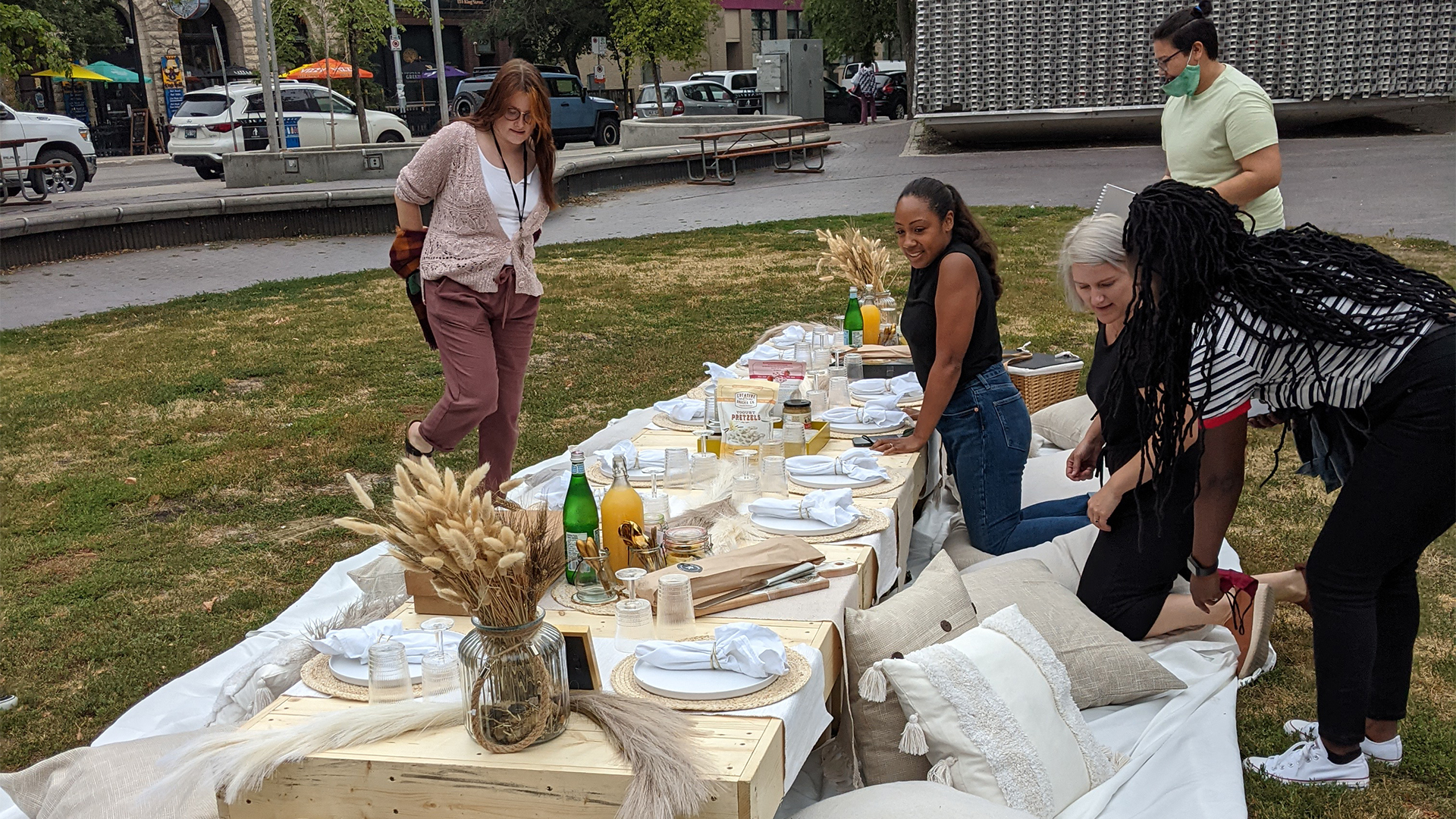
Does it feel like the last year and a half disappeared into a void? That’s what it feels like to us. We are so proud of our team for putting their noses to the grindstone to serve our clients through the pandemic and while working from home. But we know many people are feeling burned out by the remote work experience. It can feel like you’re working in a void, navigating problems alone and disconnected from the larger purpose of your efforts. So we have cautiously and optimistically returned to the office.
It feels wonderful to be back together in one space. We’re laughing and joking again, visiting local patios for lunch and hosting spontaneous brainstorms. We’re also able to keep an eye out for each other and lend a hand to anyone who appears to be struggling (something that’s much easier to do in person than on a Zoom call).
At the same time, we know provincial mandates and protocols are constantly changing. Some are travelling again and others have young children in school. To adapt and make sure everyone feels safe at work, we need to check in often with the team and keep the lines of communication open. Here’s how we’re doing it.
1. Create a plan and talk about it
If there is one thing the pandemic taught us, it’s that even the best laid plans can be flipped on its head. Having a plan A, B and C is key to preparing your employees for a return to the office. Consider not only what a return looks like, but also what it means for your team as a whole.
Before implementing any plan, discuss it with staff to see how they feel. We have a small team, so it’s easy to discuss changing protocols as a group. If you have a large team, you may want to bring your plan to a committee that represents your workforce. Remember that not everyone feels comfortable speaking up in a group (particularly if their feelings run counter to the popular opinion), so keep the door open for individuals to approach you privately.
2. Help people feel safe at work
If workplace safety wasn’t top of mind prior to the pandemic, it should be now. Implement social distancing and sanitizing measures to ensure a clean work environment. Spilt schedules are a good option for open office environments.
UpHouse was able to expand and add another 2,000 sq. ft. of office space to accommodate new staff who joined us this past year, space out desks, create more open meeting spaces and reduce crowding in high-traffic areas like the kitchen.

3. Engage employees in social events
One of the hardest parts of being away from your co-workers for over a year, is being away from your co-workers for over a year! It might be challenging for employees to feel totally engaged after such a long time away. Implement small social interactions over time like one-on-one coffee breaks and walking meetings in order to transition employees back into a full-on social environment.
There’s nothing better than feeling like your co-workers have your back, and to create this kind of culture, staff need to know each other personally. In August, our entire team gathered in a local park to enjoy a picnic — hosted by our friends and client Ethero Events. It allowed staff to reconnect in a fun, casual setting.
4. Adapt to flexible schedules
The lockdown proved that almost every office has the ability to be remote. Continue this flexibility by allowing teams to create a self-scheduling method. Managers and employees can work together to create a work timeline that allows for an in and out of office presence.
One thing that the pandemic proved to us is that our employees do not need to be in the office to be productive. More than ever, we trust them to create their own hours and work from their location of choice. Taking care of sick kids, changing work hours to maximize family time, staying home when they have the sniffles, carving out some focus time or working from the backyard on a sunny day are a few advantages of flexible schedules.
5. Be transparent
Overall, it is important to listen, reinforce patience and to involve your employees in mapping out your solutions to your work environment. Make your team heard and share your process so no one feels left in the dark. Employees who feel like their opinion is valued are happy employees.



